Bismarck, ND Pollen and Allergy Report for Summer 2023
Pollen Allergy Trends in Bismarck, ND
When is pollen lowest in Bismarck, ND?

February
Lowest month total PPM
Avg. PPM
When is pollen highest in Bismarck, ND?

April
Highest month total PPM
Avg. PPM
How does pollen in Bismarck, ND compare to North Dakota?
Bismarck has a lower average PPM than the state of North Dakota.
Bismarck yearly avg PPM:
North Dakota yearly avg PPM:
How does pollen in Bismarck, ND compare to the USA?
Bismarck has a higher average PPM than the USA.
Bismarck yearly avg PPM:
USA yearly avg PPM:
Is pollen worse this year in Bismarck, ND?
Spring 2023 was worse than spring 2022.
Spring 2023 PPM:
Spring 2022 PPM:
Average PPM in Bismarck, ND
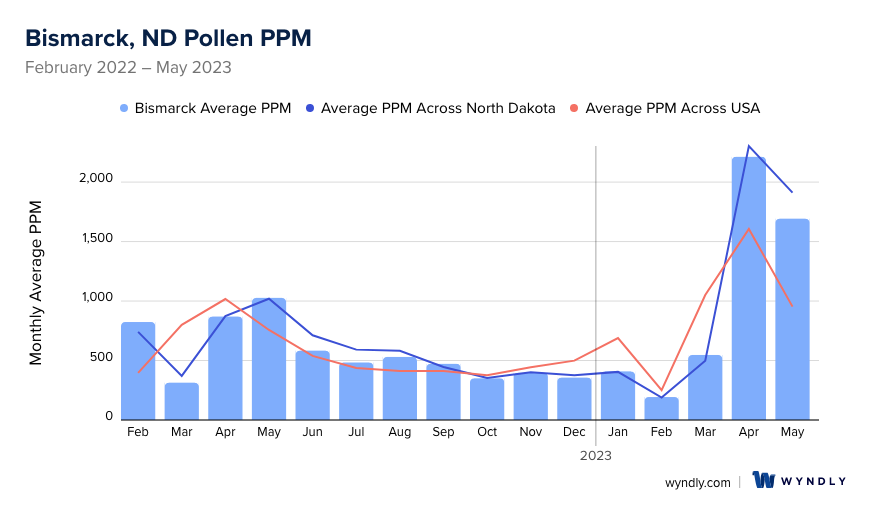
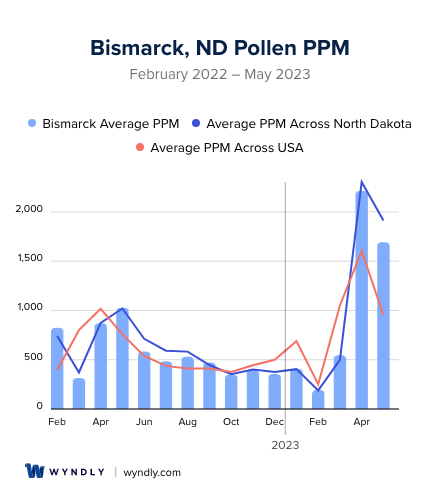
Bismarck, ND Pollen and Allergy Breakdown by Month
Grass
When is grass pollen highest in Bismarck, ND?
February has the highest grass pollen in Bismarck, ND with an average PPM of
When is grass pollen lowest in Bismarck, ND?
October has the lowest grass pollen in Bismarck, ND with an average PPM of
Tree
When is tree pollen highest in Bismarck, ND?
April has the highest tree pollen in Bismarck, ND with an average PPM of
When is tree pollen lowest in Bismarck, ND?
October has the lowest tree pollen in Bismarck, ND with an average PPM of
Weed
When is weed pollen highest in Bismarck, ND?
April has the highest weed pollen in Bismarck, ND with an average PPM of
When is weed pollen lowest in Bismarck, ND?
February has the lowest weed pollen in Bismarck, ND with an average PPM of
Bismarck, ND Pollen Monthly Breakdown by Pollen Type
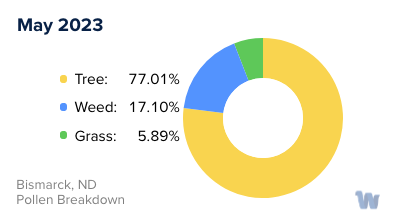
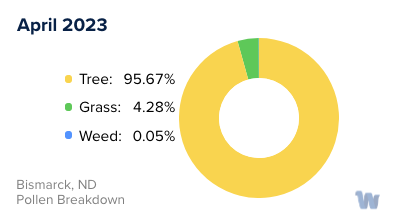
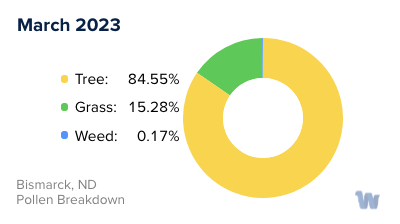
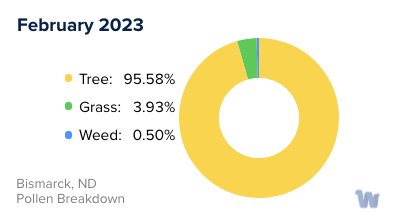
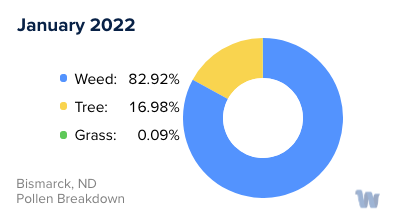
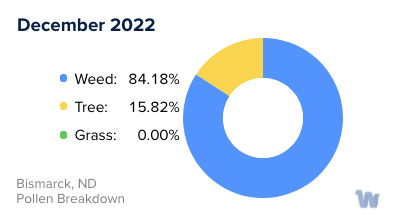
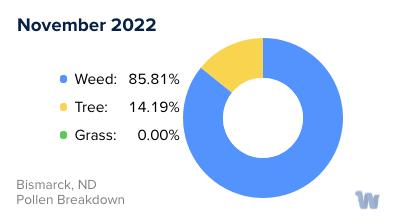
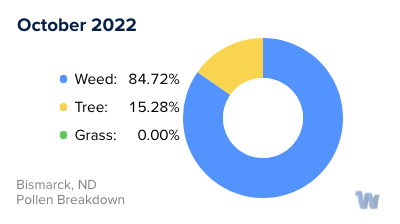
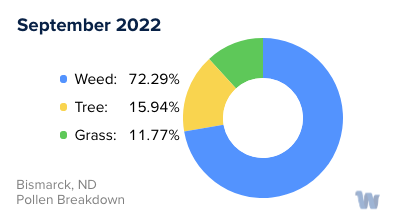
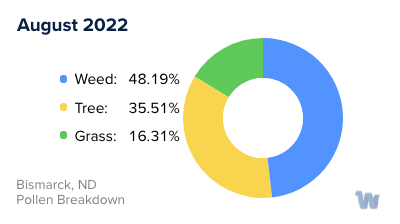
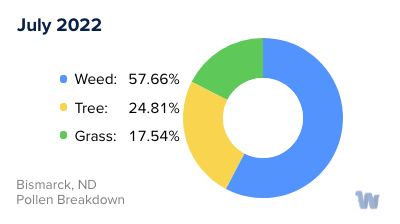

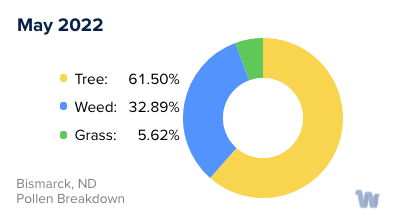
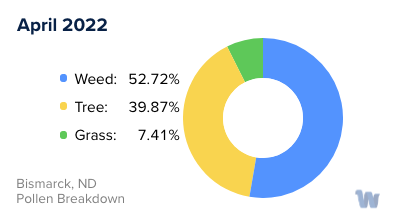
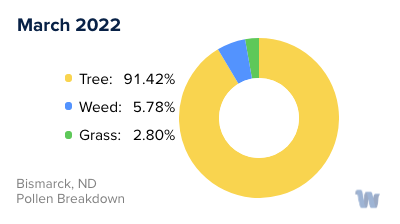
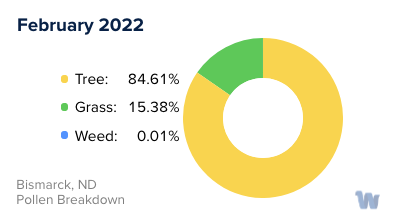
Pollen and Hay Fever in Bismarck, ND
In the Northern Great Plains and Northeastern Mixed Forest allergy regions, where Bismarck, North Dakota lies, seasonal allergies, or allergic rhinitis, can present a challenge to many residents during a significant portion of the year. These allergies are primarily triggered by the pollen released by various types of grasses, trees, and weeds.
Each type of plant releases pollen at different times of the year. In the spring, tree pollen is typically the major allergen. Types of trees in North Dakota known to produce allergy-inducing pollen include oak, maple, cottonwood, and willow. As spring transitions into summer, grasses become the primary pollen producers. Among the grasses contributing to pollen allergies in the state are bluegrass, ryegrass, Timothy grass, and orchard grass. As summer wanes and fall begins, it's the weeds, such as ragweed, wormwood, amaranth, and sagebrush, that become the primary culprits for pollen allergies.
Due to the long, cold winters in North Dakota, the start of allergy season is usually delayed until late March or early April. Despite this late start, the allergy season can still pose a challenge throughout the spring, summer, and fall months. The peak allergy seasons in North Dakota are typically in May, June, and September. During these months, it can be beneficial to keep an eye on the pollen counts and limit outdoor activities during the day when pollen counts tend to be higher.
The allergy season usually ends around late October in North Dakota. This means that residents get a more extended break from their seasonal allergies during the long and cold winter months. However, it's important to note that indoor allergens can still cause issues for many individuals, even in the absence of outdoor allergens. All in all, the cycle of pollen allergies in Bismarck, North Dakota, is a significant consideration for its residents, shaping their outdoor activities and overall quality of life throughout much of the year.

